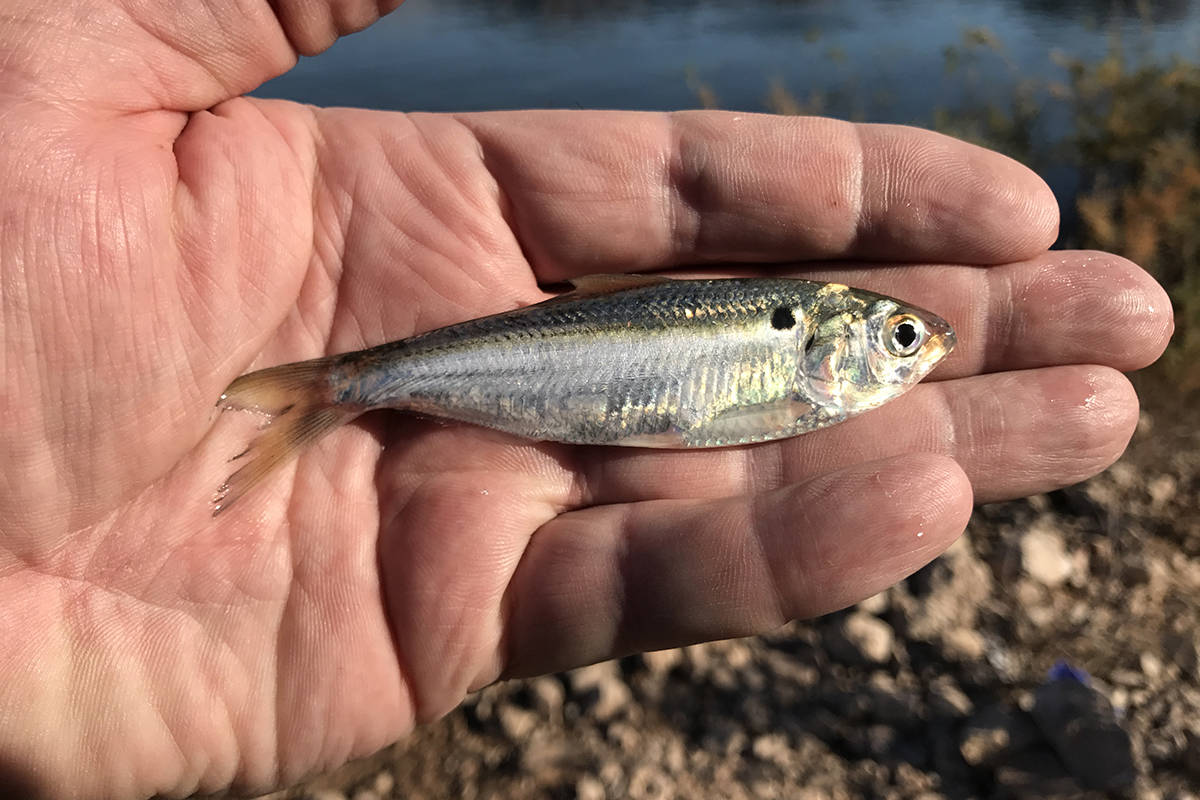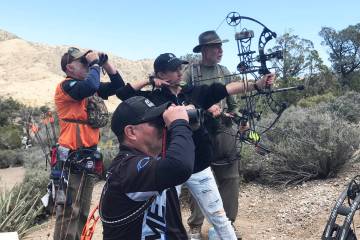Striper boils a welcome sight for anglers this time of year
If you have ever seen a troop of 12-year-old Boy Scouts descend on a Dutch oven full of peach cobbler, then you probably have a good idea of what a striper boil looks like. Striped bass may not wear a neckerchief, but when it comes to eating, they are just as aggressive.
The term boil is used to describe the surface disturbance that occurs when a bunch of stripers surround a school of baitfish and start feeding. Their intent is to eat as many of the small fish as they can as fast as they can. There is nothing dainty about the process.
While chasing black bass on a warm summer day in the Overton Arm of Lake Mead, my friend and I watched as hundreds of threadfin shad hurled themselves onto the shore as they tried to get away from a school of hungry stripers that had them pinned against the shoreline. Not that the shad wanted to end up on the shoreline, but they did want to get away from their pursuers.
Then again, some of the shad may have been flung onto the shore after being hit by a striped bass. Such behavior is typical behavior for feeding stripers.
The predatory fish will circle their quarry and push them to the surface where they rush into the baitfish and begin feeding. Along the way the stripers literally hit the baitfish to stun them. Then the stripers circle back and eat the dazed fish as they flounder on or near the surface.
For devout anglers, few fishing experiences are as exciting as throwing a topwater lure into the middle of a striper boil. They throw a topwater lure because all the action takes place on top of the water, for as long as the boil lasts anyway.
Binoculars can help you verify that what you see is a striper boil and could save you an unnecessary trip. Gizzard shad sometimes porpoise along the top of the water. When they do so in large numbers, they can look like boiling stripers. At first glance anyway.
When you do see a boil, the first thing you should do is slow down, just not too slow. You do need to move quickly, but not so fast that you and your boat come up on the boil too fast.
It is not uncommon to see anglers blow right through a boil as they race to get there before someone else. All they succeed in doing is shutting down the boil, and nobody catches any fish.
Approach a boil with enough speed to get there, but slow enough that you can come to a stop just outside the boil. Once you are set, throw your bait toward the far side of the boil, then work your lure quickly through the area with feeding activity. You want it to resemble the baitfish the stripers are after.
A Zara Spook produces a distinctive walk-the-dog motion across the water’s surface and can be quite effective on feeding stripers. So too can a Rebel Jumpin’ Minnow, Sassy Shad, pencil popper and any other lure that resembles a struggling baitfish.
When a boil shuts down — and they all do sooner or later — don’t give up. Have another rod rigged up with a sinking lure and throw it to the stripers that might be chasing fleeing shad below the surface.
A Kastmaster or something similar will often catch those fish. You can use a reeling retrieve or use it as a jigging spoon.
The boiling season generally gets underway in mid- to late June and runs into early October, but the peak time for striper boils are the months of July and August. So now is the time.
Freelance writer Doug Nielsen is a conservation educator for the Nevada Department of Wildlife. His “In the Outdoors” column is not affiliated with or endorsed by the NDOW. Any opinions he states in his column are his own. Find him on Facebook at @dougwritesoutdoors. He can be reached at intheoutdoorslv@gmail.com.






















